Evolutionary Ecology
The department of Evolutionary Ecology gathers complementary skills in behavioural ecology, population dynamics, population biology, community ecology, and methodology (statistics and modelling). The research done in the department aims at studying how animal species evolve in a changing world by understanding the causes of the evolution of traits, adaptations and interactions. For that, we consider different levels of organization from individuals to populations and communities. Because organisms cannot be considered isolated from other biotic factors, we consider pathogens but also competing species within communities.
We study how individuals adapt to their environments that are largely impacted by anthropic pressures, and how life history traits and behaviour evolve in response to these pressures. Although we mainly focus on phenotype, we more and more consider the mechanistic link between the genotype and the phenotype. We develop the theoretical framework of our discipline through a conceptual and modeling approach. In parallel, we test hypotheses that arise from theoretical predictions through experimental, comparative and observational approaches on different biological models (insects, birds, mammals). Experimental approaches are developed in the laboratory (insect model) and in natura (bird, insect and mammal models). Observational and comparative research is mainly concerned with vertebrates. Our approaches are also, and increasingly, interested in the mechanisms of adaptive responses. In addition to the classical approaches of demographic analysis and trait change, methods of ecophysiology, chemical ecology and molecular biology are used.
Our department hosts several long-term studies of wild populations of different species. These long-term studies offer a valuable way to understand how biotic and abiotic factors affect individuals’ life history traits, and the functioning of populations in natura. Five populations of mammalian species are thus monitored for several years (more than 40 years on roe deer, 30 on Alpine marmots, 25 years on cats, 16 years on zebras, and 20 years on impala). Two of our study sites (La Sassière in Vanoise National Park (Alpine marmots) and Hwange National Park) have been certified as “Site d’Etude en Ecologie Globale” (SEEG), and two (ZA “Hwange” and ZA “Antarctic and sub-Antarctic”) were certified as “Zone Atelier” by the CNRS.
The department of Evolutionary ecology is also largely involved in training activities. Lastly, we also have strong socio-economic relationships. Indeed, because we address questions of major societal interest (global warming, public health) we tightly collaborate with socio-economic partners (Office Français de la Biodiversité, Vanoise National Park, Hwange National Park in Zimbabwe, Office National des Forêts, etc.) and participate to general public and media events.
Publications
Display of 2311 to 2340 publications on 2449 in total
A soil microscale study to reveal the heterogeneity of Hg(II) impact on indigenous bacteria by quantification of adapted phenotypes and analysis of community DNA fingerprints
FEMS Microbiology Ecology . 31 ( 2 ) : 107-115
Journal article
see the publicationEctomycorrhization of six Acacia auriculiformis provenances from Australia Papua New Guinea and Senegal in glasshouse conditions: effect on the plant growth and on the multiplication of plant parasitic nematodes
Australian Journal of Experimental Agriculture . 40 : 443-450
Journal article
see the publicationHeterogeneous Cell Density and Genetic Structure of Bacterial Pools Associated with Various Soil Microenvironments as Determined by Enumeration and DNA Fingerprinting Approach (RISA)
Microbial ecology . 39 : 263-272
Journal article
see the publicationDiversity of the bacterial hyperparasite Pasteuria penetrans in relation to the control of root-knot nematodes (Meloidogyne spp.) on Acacia holosericea
Nematology . 2 : 435-442
Journal article
see the publicationIdentification of birds as biological markers along a neotropical urban-rural gradient using co-inertia analysis
Journal of Environmental Management . 59 : 121-140
Journal article
see the publicationHeterogeneous cell density and genetic structure of bacterial pools associated with various microenvironments as determined by enumeration and DNA fingerprinting approach (RISA)
Microbial ecology . 39 : 263-272
Journal article
see the publicationL1 (LINE-1) Retrotransposon Evolution and Amplification in Recent Human History
Molecular Biology and Evolution . 17 ( 6 ) : 915-928
Journal article
see the publicationDevelopment of an ecotoxicological model in an arborescent river network: an attempt with a brown trout population
Challenges in applied population biology AAB meeting Aspects of Applied Biology 53, University London, GBR, 8-9 juillet 1999 . : 131-136
Conference paper
see the publicationApproche qualitative et quantitative de l'effet de la jachère sur des populations de champignons mycorhiziens à arbuscules
Le sol, milieu vivant : fonctionnement et gestion .
Conference paper
see the publicationSusceptibility of several sahelian Acacia to Meloidogyne javanica (Treub) Chitw
Agroforestry Systems . 46 : 123-130
Journal article
see the publicationDevelopment of an ecotoxicological model in an arborescent river network: an attempt with a brown trout population
Aspects of Applied Biology - Challenges in applied population biology . 53 : 131-136
Journal article
see the publicationCharacterization of Unexpected Growth of Escherichia coli O157:H7 by Modeling
Applied and Environmental Microbiology . 65 : 5322-5327
Journal article
see the publicationIntra-strand biases in bacteriophage T4 genome
Gene . 238 : 59-64
Journal article
see the publicationPhysical mapping of an origin of bidirectional replication at the centre of the Borrelia burgdorferi linear chromosome
Molecular Microbiology . 32 : 437-445
Journal article
see the publicationEvolution of DNA base composition under no-strand-bias conditions when the substitution rates are not constant
Molecular Biology and Evolution . 16 : 719-723
Journal article
see the publicationAsymmetric substitution patterns: a review of possible underlying mutational or selective mechanisms
Gene . 238 : 65-77
Journal article
see the publicationHigh variation in multiple paternity of domestic cats (Felis catus L.) in relation to environmental conditions
Proceedings of the Royal Society B: Biological Sciences . 266 : 2071-2074
Journal article
see the publicationPatterns of size and shape differentiation during the evolutionary radiation of the European Miocene murine rodents
Lethaia . 32 : 61-71
Journal article
see the publicationSize and shape variability in relation to species differences and climatic gradients in the African rodent Oenomys
Journal of Biogeography . 26 : 857-865
Journal article
see the publicationDynamics Of Transposable Elements Under The Selection Model
Genetical Research . 74 : 159-164
Journal article
see the publicationGrowth modelling in accordance with daily water temperature in European grayling (Thymallus thymallus L.)
Canadian Journal of Fisheries and Aquatic Sciences . 56 : 994-1000
Journal article
see the publicationBehavioral choices based on patch selection: a model using aggregation methods
Mathematical Biosciences . 157 : 189-216
Journal article
see the publicationGene size reduction in the bacterial aphid endosymbiont, Buchnera.
Molecular Biology and Evolution . 16 ( 12 ) : 1820-1822
Journal article
see the publicationMorphological evolution of the murine rodent Paraethomys in response to climatic variations (Mio-Pleistocene of North Africa)
Paleobiology . 25 ( 3 ) : 369-382
Journal article
see the publicationStrategies of survival during extreme environmental perturbations: evolution of conodonts in response to the Kellwasser crisis (Upper Devonian)
Palaeogeography, Palaeoclimatology, Palaeoecology . 146 : 19-32
Journal article
see the publicationThe use of conspecific reproductive success for breeding habitat selection in a non-colonial hole-nesting species the collared flycatcher
Journal of Animal Ecology . 68 : 1193-1206
Journal article
see the publicationPhenotypic plasticity of abdominal pigmentation in D. kikkawai : multiple interaction between a major gene sex abdomen segment and growth temperature
Genetica . 105 : 165-176
Journal article
see the publicationPhenotypic plasticity of body pigmentation in Drosophila: correlated variations between segments
Genetics Selection Evolution . 30 ( 2 ) : 181-194
Journal article
see the publicationTranscriptional Regulation and Function of hsr203J, an Hypersensitivity-Related Gene of Tobacco Activated in Response to Ralstonia solanacearum
Bacterial Wilt Disease . : 203-208
Book chapter
see the publication
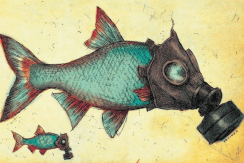
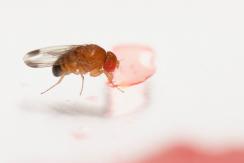
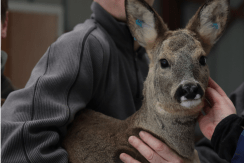
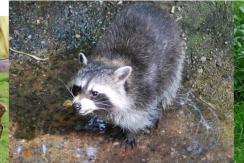
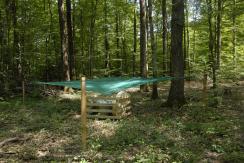
You also, comment on this article